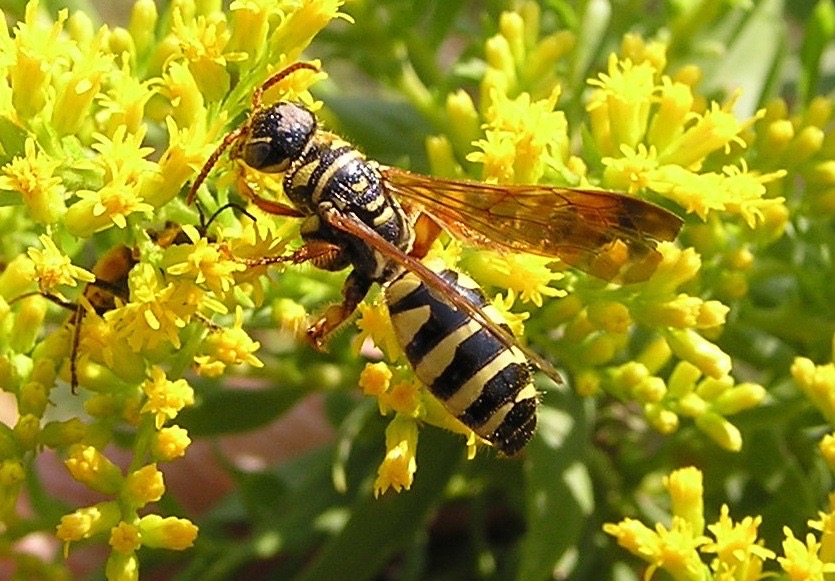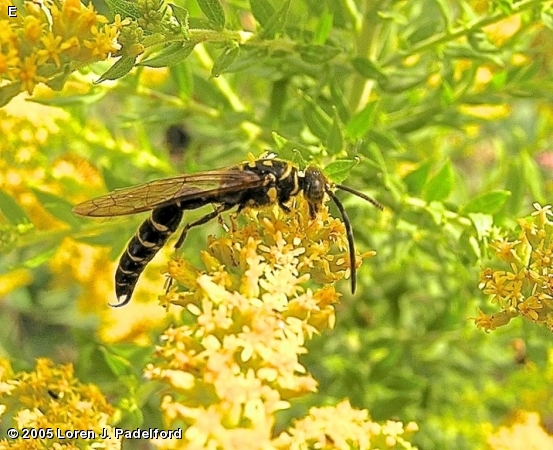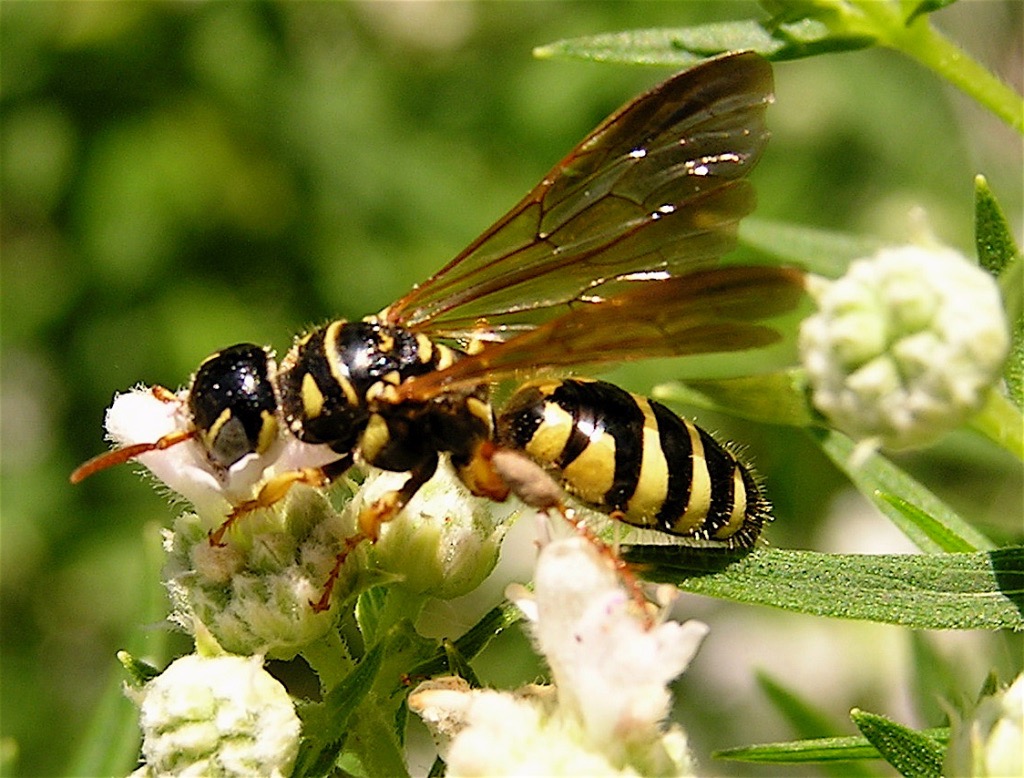
This wasp is approximately 1 inch (female) to 1 1/4 inches (male) in length. They are black with yellow bands on the abdomen. The females (see photos 1, 2 and 6) have yellow markings on the head and thorax , and five wide yellow bands (some discontinuous) on the abdomen. The female has short, red antennae and reddish legs. Males (see photos 3, 4 and 5) have fairly long black antennae and yellow legs. Males have a long slender abdomen with five narrow yellow bands and an upturned hook or “pseudostinger.” Only the females can sting.
These wasps are uncommon in Fontenelle Forest. Adults can be seen nectaring on flowers from July through September.
The larvae are parasites of soil-inhabiting beetle larvae, especially May beetles (Phyllophaga). The nesting habits are not well known in this family, but some experts believe the adult females do not construct nests but instead ovIposit directly on the grub. The pupae overwinter in soil and the adults emerge in early summer. Individuals of this genus are so similar that many are not identifiable to species from photographs.
The content of NatureSearch is provided by dedicated volunteer Naturalists of Fontenelle Forest who strive to provide the most accurate information available. Contributors of the images retain their copyrights. The point of contact for this page is: Loren Padelford.






